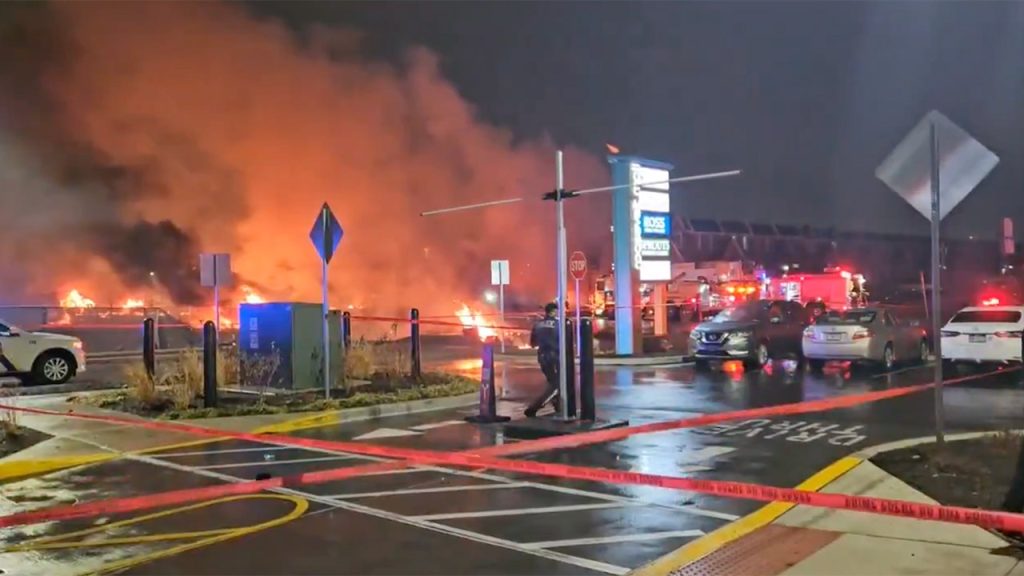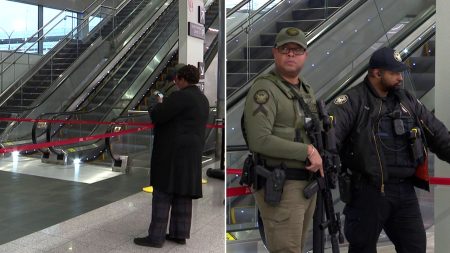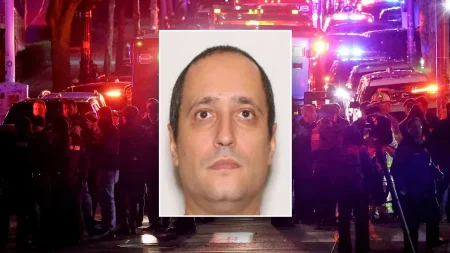The recent crash of a private Learjet 55 in Philadelphia has left investigators searching for answers amidst the wreckage. New images have emerged, depicting the severely damaged black box recovered from the crash site. The National Transportation Safety Board (NTSB) confirmed the discovery of this crucial device, buried eight feet underground, offering a glimmer of hope in piecing together the events leading to the tragic incident. The Learjet, operated by Jet Rescue Air Ambulance, was departing from Northeast Philadelphia Airport when it crashed, claiming the lives of all six individuals on board, including the pilot, co-pilot, a medical team consisting of a physician and paramedic, a young pediatric patient, and her mother. All were Mexican nationals. Adding to the tragedy, one person on the ground was also fatally struck by the crashing aircraft.
The NTSB’s recovery of the black box is a significant development in the investigation. This device, also known as a flight data recorder, is designed to withstand extreme impacts and provides invaluable data about the flight’s final moments. While typically orange for enhanced visibility during search and rescue operations, the recovered black box appears heavily damaged, indicating the force of the impact. The NTSB has stated that the components of the black box will be sent to their Vehicle Recorders Laboratory in Washington, D.C., for thorough analysis. In addition to the black box, both engines of the aircraft have been recovered, and the remaining wreckage will be transported to a secure facility in Delaware for further examination.
The recovery of the black box is paramount to understanding the factors contributing to the crash. This device records critical flight data, including altitude, airspeed, heading, and engine performance. It also captures cockpit audio, providing insights into the conversations and actions of the flight crew during the crucial moments before impact. By meticulously analyzing this data, investigators hope to recreate the sequence of events leading to the tragedy and identify any mechanical failures, pilot error, or other factors that may have played a role. The information gleaned from the black box will be crucial in determining the cause of the crash and potentially preventing similar incidents in the future.
Beyond the aircraft itself, the investigation is also focusing on other potential contributing factors, such as weather conditions at the time of the crash, air traffic control communications, and the aircraft’s maintenance history. Investigators will thoroughly examine all available evidence, including radar data, witness testimonies, and the wreckage itself, to gain a comprehensive understanding of the circumstances surrounding the crash. The NTSB’s final report, which will detail their findings and conclusions, is likely to take several months to complete.
The crash has left a trail of devastation, claiming the lives of seven individuals and leaving families grappling with unimaginable loss. The victims aboard the plane were all Mexican nationals, traveling for medical care for the young pediatric patient. The individual killed on the ground was a bystander caught in the path of the crashing aircraft. The community is mourning the loss of these lives, and support is being offered to the affected families. Adding to the tragedy, a 38-year-old man, Jason Rodriguez, who was in the area at the time of the crash, remains missing. His family, desperately searching for answers, last heard from him while he was shopping.
The investigation into the Philadelphia Learjet crash is a complex and painstaking process. The recovery of the black box is a significant step forward, but much work remains to be done. Investigators will continue to meticulously analyze all available data and evidence to determine the cause of the crash and prevent similar tragedies in the future. The loss of life in this incident underscores the importance of rigorous safety standards and continuous improvements in aviation technology. The NTSB’s comprehensive investigation will play a crucial role in enhancing aviation safety and preventing future accidents. In the meantime, the families and communities affected by this tragedy are left to grieve their losses and seek solace in the midst of profound sorrow.











